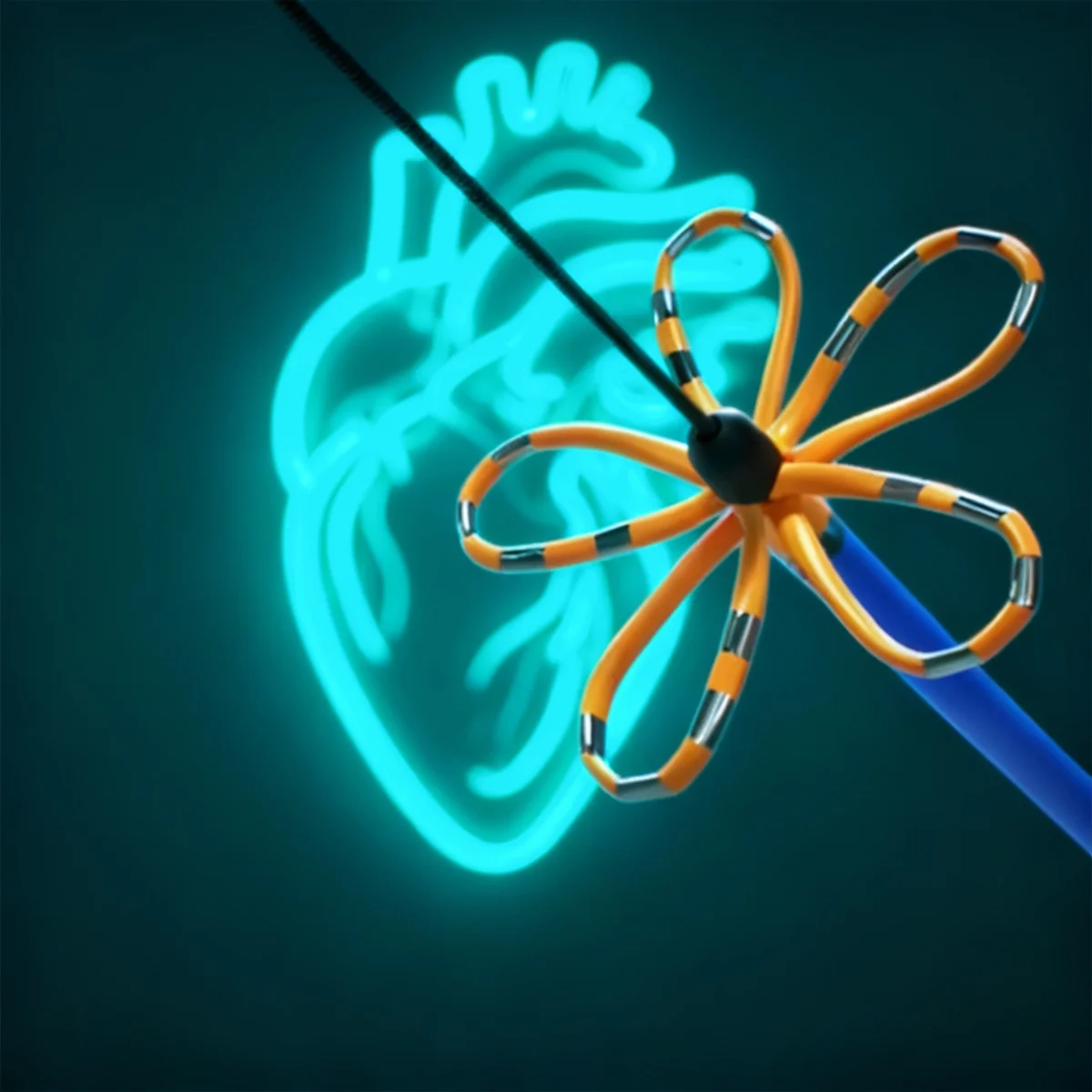If you know the name of a heart rhythm problem, the chances are it’s atrial fibrillation. That’s because AFib, as it’s also known, is the most common type of arrhythmia around.
But there’s another type of arrhythmia that sounds a lot like AFib: atrial flutter.
This can be confusing. Atrial flutter and atrial fibrillation don’t merely sound similar. These conditions also share many of the same symptoms, causes and treatments. It’s even possible to have both conditions at once: around 40% of people with AFib also experience episodes of atrial flutter.
Yet atrial flutter and atrial fibrillation aren’t the same condition. They differ in certain important ways. And those ways have implications for how we approach and treat them.
The reassuring thing is that, with the correct diagnosis and care, neither condition is usually life-threatening. Dr Lyne sees people for atrial flutter and atrial fibrillation in our Dublin clinics daily. He’s one of Ireland’s best-known specialists for these two heart rhythm conditions – and you can book a consultation with him quickly and easily through our contact page.
So, what exactly is the difference between atrial flutter and atrial fibrillation? Here’s a guide to how the two heart conditions work – and how they differ.
What is Atrial Flutter?
Atrial flutter is a heart rhythm problem (arrhythmia) that originates in the upper chambers of the heart (the atria). To understand why it happens, it’s helpful to understand how the heart works.
Electrical signals control your heartbeat. If these signals get disrupted for any reason, they can prompt the heart to beat abnormally. This is what happens in atrial flutter. An abnormal electrical circuit in the atria causes the two upper chambers to contract much more quickly than usual – sometimes 300 or even 350 beats per minute (where a normal heartbeat is around 60-100 beats per minute).
Although the heart’s lower chambers (the ventricles) pump faster in response, they can’t contract at the same pace as the atria. So, the upper and lower chambers begin to contract at different speeds.
Symptoms of Atrial Flutter
Atrial flutter doesn’t always cause any noticeable symptoms. Some people only discover they have it when they go for a medical checkup for something else. But if you were to have symptoms of atrial flutter, these are the kinds of things you might experience:
- palpitation (a feeling that the heart is racing or beating more forcefully than normal)
- fatigue
- light-headedness
- shortness of breath
Atrial flutter can also cause fainting spells or tightness in the chest, though these symptoms are less common. (Whether related to atrial flutter or not, pains or tightness in the chest should be treated as a medical emergency.)
It is difficult to predict exactly when you might experience these symptoms. Some people find they come and go, which we call paroxysmal atrial flutter. Others find their episodes of atrial flutter can carry on for days or even weeks, which we call persistent atrial flutter.
Causes of Atrial Flutter
It’s often quite difficult to pinpoint the reason why a person develops atrial flutter in the first place. Sometimes, it’s caused by another underlying heart problem. Conditions like heart valve disease or coronary heart disease, for instance, can damage the heart tissue. This can disrupt the electrical circuit in the atria, triggering the heart to go into atrial flutter. Certain types of heart surgery can occasionally result in a patient developing atrial flutter too.
Other risk factors for atrial flutter include heart failure (when the heart isn’t pumping as strongly as it should), a previous heart attack, and high blood pressure (for more about high blood pressure, which is also known as hypertension, see: Why is high blood pressure a problem?). It’s worth noting that our chances of developing atrial flutter increase as we get older, too. Sometimes, however, there’s just no obvious cause at all.
Atrial Flutter Treatment
Treatment for atrial flutter tends to focus on three areas: restoring the heart’s natural rhythm, slowing down the heart rate, and preventing blood clots from forming. The type of treatment varies from patient to patient. But here are some of the main approaches:
- Cardiac ablation – a procedure that uses tiny bursts of hot or cold energy to target the areas where the atrial flutter originated
- Cardioversion – a procedure that uses tiny electrical shocks to return the heart to a natural rhythm
- Medication – medicines like beta blockers to control the heart rate and slow the speed of the pulse, or anticoagulants (such as apixaban or edoxaban) to reduce the risk of blood clots and strokes,
What is Atrial Fibrillation?
Atrial fibrillation – also known as AFib, or simply AF – is another type of heart rhythm problem. And, like atrial flutter, the problem originates in the upper chambers of the heart. In AFib’s case, electrical signals that should run smoothly within the chambers start to become random and disorganised. This disorganisation causes the atria to quiver or, to use the medical term, “fibrillate”. As a result, the heartbeat changes, often becoming too fast or, less commonly, too slow. The ventricles can no longer pump blood efficiently around the body, which puts the heart under more strain than normal. It can also raise the risk of developing blood clots.
Atrial fibrillation is more common than atrial flutter. AFib is also more common in men than in women, and the risks of developing it increase as we get older. (For an in-depth explanation of AFib and how it works, see this article: What is atrial fibrillation?)
Symptoms of Atrial Fibrillation
One of the problems with AFib is that, like atrial flutter, it often doesn’t cause any noticeable symptoms. So, some patients can be completely unaware they’re suffering from the condition until it’s picked up at another consultation. When they do occur, though, AFib symptoms can include:
- palpitation
- shortness of breath
- fatigue
- light-headedness or dizziness
- fainting
- chest pain or tightness
Atrial fibrillation can impact people in different ways. For some people, it comes on for a short period of time – perhaps a few hours or a day. This is known as paroxysmal atrial fibrillation (PAF). For others, it can last for a week or more before disappearing (persistent AF). Sometimes, though, it can be present all the time (permanent AF, or long–standing persistent AF).
Causes of Atrial Fibrillation
As with atrial flutter, it can often be difficult to determine the root cause of AFib. One potential reason is that the heart has suffered damage in the past. There are quite a few ways this could happen, from ongoing high blood pressure to serious heart-related conditions like heart valve disease, congenital or coronary heart disease, pericarditis (when the heart lining becomes inflamed) and cardiomyopathy (a disease that causes the wall of the heart to thicken).
Some conditions outside the heart – such as diabetes, thyroid problems and sleep apnoea – are known to occur with AFib too. But the atrial fibrillation could also potentially be related to certain lifestyle factors, like smoking, heavy drinking or obesity. Sometimes, however, the cause just isn’t obvious. And although AFib is more likely to affect older people, symptoms of atrial fibrillation can happen to people who are young and very active, too.
Atrial Fibrillation Treatment
Treatment for atrial fibrillation varies depending on the type of AFib you have, and other conditions you might have alongside it. The main approaches include:
- Medication – to reduce the risk of stroke and / or restore natural heart rhythm
- Cardiac Ablation – to surgically target the heart tissue that’s causing the electrical problems
- Cardioversion – to surgically return the heart to a normal heart rhythm
- A pacemaker – to help maintain a correct heart rate over the long term
Atrial Flutter vs. Atrial Fibrillation
By now, you’ve probably realised that atrial flutter and atrial fibrillation have some major similarities. They are both abnormal heart rhythms that originate in the upper chambers of the heart. Their problems are rooted in electrical activity. And they share many of the same symptoms (and causes).
But there are some important differences, too. The main one involves how those faulty electrical signals occur in the heart. In atrial flutter the signals are faster, but they’re organised. If you observe the pattern of atrial flutter on an ECG test, the graph of electrical activity typically rises and falls at the same intervals. Doctors often refer to this as a “sawtooth” pattern. With AFib, on the other hand, the signals coming from the atria are chaotic and disorganised. This has an impact on the pulse:
In atrial flutter – the heart beats faster than usual but the pulse is regular.
In atrial fibrillation – the heart may beat faster or slower, but the pulse is irregular.
Similarities Between Atrial Flutter and Atrial Fibrillation
- Atrial flutter and AFib are both caused by faulty electrical signals in the heart’s upper chambers
- They both prevent the heart from pumping blood as efficiently as normal
- They can both cause similar symptoms, including palpitation, dizziness, shortness of breath, fatigue, and tightness or pain in the chest
- They can both be present without causing any noticeable symptoms
- Neither is usually life-threatening
- They can increase the risk of stroke and other complications
- They need to be correctly diagnosed and often require treatment
- The main goals of treatment are the same for both conditions: to restore the heart’s natural rhythm and to lower the risk of stroke and other complications
Differences Between Atrial Flutter and Atrial Fibrillation
- AFib is much more common than atrial flutter.
- In atrial flutter, the faulty electrical activity in the heart is organised; with AFib, it’s disorganised.
- AFib causes a characteristic quivering or “fibrillation” of the heart’s upper chambers.
- Atrial flutter causes the upper chambers to beat much faster than the lower chambers.
- While both conditions cause similar symptoms, atrial flutter symptoms tend to be milder.
- Although both conditions raise the risk of stroke or blood clots, the risk is slightly higher with AFib.
- Ablation is often the first line of treatment for atrial flutter; for AFib, it’s more likely to be medication.
Atrial Flutter and Atrial Fibrillation Treatment with Dr. Lyne
If you’re worried about atrial flutter or atrial fibrillation, we’re here to help. Maybe your GP suspects you have one of the conditions. Or maybe a friend or loved one has just started to experience some of the symptoms we’ve described in this piece, and you’re concerned about what they should do next. Either way, we can arrange for you to have a consultation with Dr. Lyne at one of our clinics in Dublin. He’ll make sure you get all the tests you need for a full diagnosis, and the right programme for treatment if you need it.
Atrial flutter and AFib are two of the most common conditions we see here in the clinic. The good news is that, with the right diagnosis and medical approach, neither condition needs to be a life sentence. Modern treatments for both atrial flutter and atrial fibrillation are very effective at controlling symptoms, lowering the risk of complications and, ultimately, helping you get back to doing the everyday things you want to do most.
Need to talk to us? You can get in touch with Heart Rhythm Cardiologist quickly by phone or email, or by booking a consultation online through our contact page. The team will be happy to help.
Atrial Flutter vs. Atrial Fibrillation: FAQs
A: Both atrial flutter and atrial fibrillation can potentially happen to adults of all ages. But they become more common as we get older. Certain medical conditions, previous heart surgery, and lifestyle situations like obesity and smoking can also raise the risk of developing the conditions.
A: The main difference is in the way faulty electrical impulses occur within the heart. With atrial flutter, the electrical activity is regular – it creates a “sawtooth” pattern in heart tests. With AFib, the electrical signals are chaotic and disorganised. This causes the upper chambers of the heart to quiver or twitch.
A: Although the symptoms can be uncomfortable, neither condition is usually life-threatening. However, because both can cause the heart to pump less efficiently, they can lead to other, more serious complications without treatment. Most people who are diagnosed with atrial flutter or AFib will need treatment.
A: A pulse check can sometimes give the first indication of atrial flutter and AFib. While a resting pulse is usually 60-100 beats per minute, it can rise significantly if either condition is present (or, with AFib, it can be slower or feel irregular). But it’s important to get a proper diagnosis. Two common ways are with an ECG test or a holter monitor.
A: Although it’s impossible to guarantee that atrial flutter or AFib will never return after treatment, both conditions can be managed very effectively with modern techniques and medicines. Treatment for atrial flutter and atrial fibrillation focuses on returning the heart to a natural rhythm, reducing the risk of stroke, and restoring a normal heart rate.






